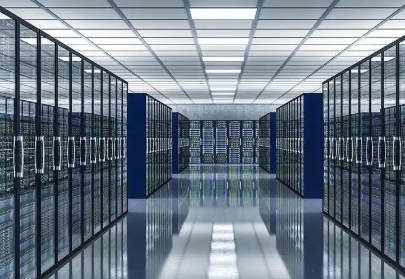How to improve the efficiency of data center servers? The goal of improving the efficiency of data center servers is usually to optimize resource utilization, reduce energy consumption, improve performance, and ensure system reliability. The following are some key strategies to improve server efficiency:
1. Hardware optimization
Using more efficient server hardware, such as high-performance CPU, memory, and storage devices, can directly improve the computing power and response speed of the server. Choose the appropriate processor (such as multi-core processors, low-power and high-performance server processors). Equipped with efficient SSDs instead of traditional HDDs, SSDs have faster read and write speeds.
2. Software optimization
Choose an operating system that suits the server hardware and optimize it. For Linux, adjust kernel parameters (such as sysctl settings) and disable unnecessary services.
Configure appropriate schedulers, memory management, and network configurations to maximize the utilization of hardware resources.
For applications that require high data throughput, use compression technology to reduce the amount of data transmitted, or encrypt on the network to improve data security.
3. Virtualization and containerization
Run multiple virtual machines (VMs) through virtualization technology (such as VMware, Hyper-V, or KVM) to better utilize server resources. Virtualization allows hardware resources to be allocated on demand, avoiding waste of server resources. Use resource management tools such as vSphere, OpenStack, etc. to dynamically allocate resources.
Compared with traditional virtualization, container technology (such as Docker) is more lightweight and can greatly improve resource utilization and reduce system overhead. Containerization allows multiple applications to share the same operating system kernel without allocating a complete virtual machine to each application.
4. Load balancing and high availability
Use a load balancer to evenly distribute traffic to multiple servers to avoid overloading a single server and ensure efficient use of resources. Configure redundant servers and automatic failover mechanisms (such as dual-machine hot standby) to improve system reliability and stability and avoid performance degradation caused by failures.
If a large number of users access the data center, static content can be cached to nodes closer to users through a content distribution network (CDN) to reduce server load and bandwidth consumption.

5. Energy efficiency optimization
Select low-power hardware (such as low-power CPU, power supply with high power efficiency), and regularly check power usage efficiency (PUE, Power Usage Effectiveness) to ensure energy efficiency.
Reduce energy consumption through modern cooling technology. Liquid cooling and heat exchange systems are more efficient than traditional air cooling systems, especially in high-density computing environments.
Dynamically adjust the power consumption of servers through intelligent power management. Some servers provide the function of dynamically adjusting CPU frequency, memory bandwidth and other resources according to load, which can effectively reduce energy consumption during idle time.
6. Network optimization
Bandwidth management, ensure the optimization of data center network configuration, use high-bandwidth and low-latency switches and routers to support large amounts of data exchange and reduce bottlenecks. Configure multi-path networks and redundant links to improve network reliability and prevent single point failures.
By using data compression technology and caching strategies in the network, the amount of data transmission can be effectively reduced and the efficiency of data transmission can be improved.
7. Storage optimization
Use distributed storage to optimize data storage and access speed. These storage solutions can distribute data across multiple physical nodes to improve scalability and fault tolerance. Use SSD to accelerate storage systems, especially in application scenarios that require high I/O performance (such as databases, high-concurrency applications, etc.).
Optimize the use of storage space through data deduplication (reducing duplicate data storage) and compression.
To improve the efficiency of data center servers, it is necessary to start from hardware selection, software optimization, resource management, virtualization, cooling technology, energy efficiency improvement and other aspects. Through efficient resource utilization, reducing redundancy, improving network and storage performance, and using automation and monitoring tools, the performance of the server can be maximized, energy consumption can be reduced, and overall work efficiency can be improved.






